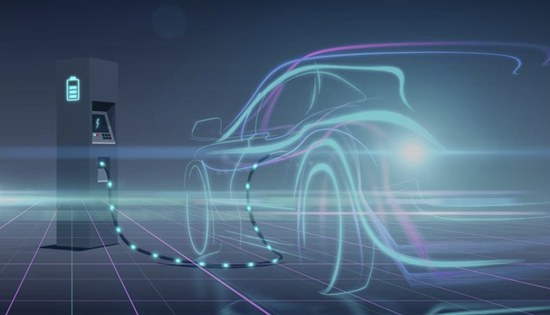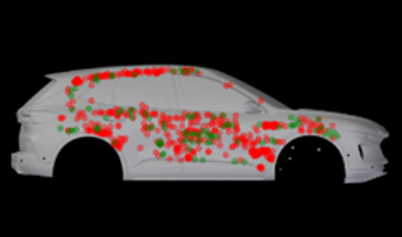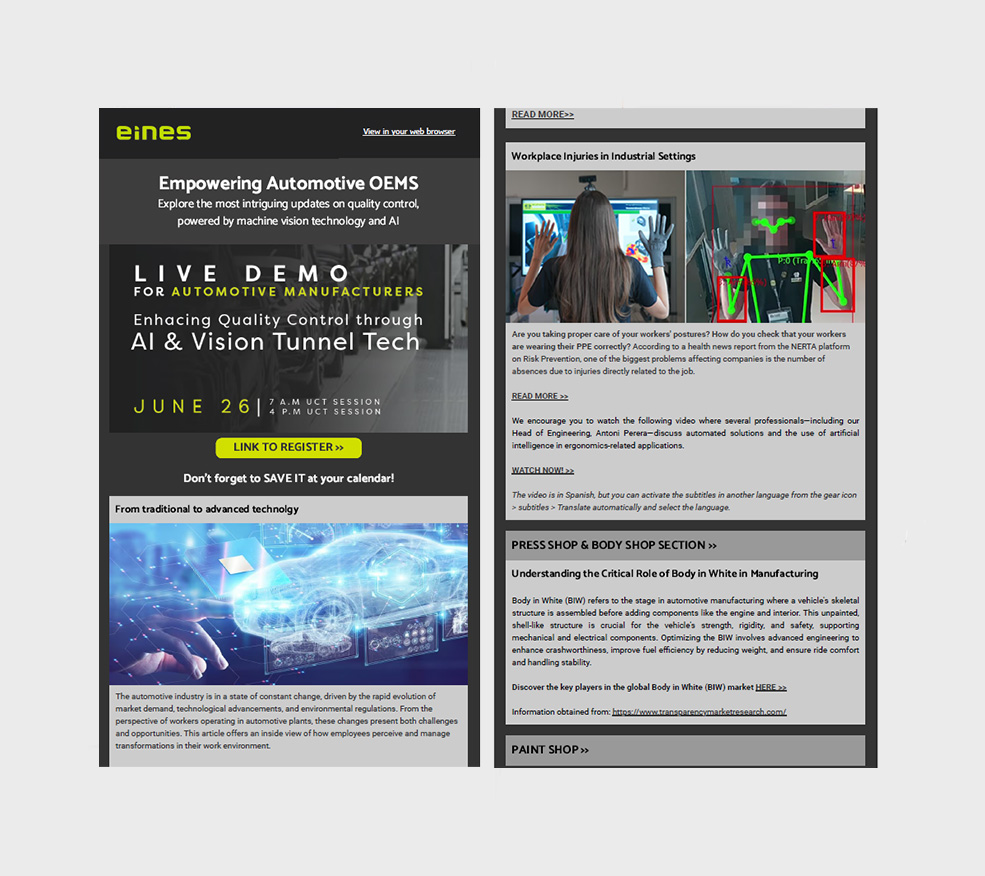The automotive industry is racing toward zero emissions. Or is it? With ambitious climate goals on the horizon and growing pressure from regulations and consumer expectations, one might assume the transition to electric vehicles (EVs) is accelerating at full speed. But the reality, as the latest data reveals, is far more complex.
At EINES, where we focus on automating quality control in vehicle manufacturing, we closely follow this evolution. After all, the vehicles may change, but the need for precision, reliability, and seamless integration in production processes remains constant.
So, what’s going on with the EV transition?
What do the numbers say?
According to the European Automobile Manufacturers’ Association (ACEA), the share of battery electric vehicles (BEVs) in the EU rose to 12.1% of total new car registrations in the first half of 2024. That’s a step forward—but not the leap many were expecting. Several countries are progressing steadily, while others are still lagging far behind due to critical challenges in infrastructure and affordability.
In contrast, internal combustion engine (ICE) vehicles still account for more than half of all sales across Europe. Hybrid electric vehicles (HEVs), meanwhile, are gaining popularity, representing a kind of “middle ground” in the consumer mindset. It’s clear: the road to zero emissions is not linear.
Are charging networks growing fast enough?
One of the biggest obstacles to EV adoption is not the vehicle itself but the ability to charge it. Although the number of public chargers in Europe has increased, the gap between demand and availability remains substantial. For long-distance travel or densely populated cities, drivers continue to face range anxiety and infrastructure limitations.
Moreover, the readiness of the power grid varies significantly across regions. Not every country—or factory—is prepared for the high energy demands of large-scale electrification, especially when paired with other industries undergoing digital transformation.
What does this mean for OEMs and tier suppliers?
For car manufacturers and suppliers, the message is clear: agility is everything. Adapting production lines to accommodate EVs means dealing with new materials, architectures, and tighter quality tolerances, especially around critical components like battery packs, electric drive units, and lightweight body structures.
Automation and inline quality control systems, such as those developed by EINES, are becoming essential. Our solutions help ensure zero-defect manufacturing, enabling plants to maintain efficiency and scale operations while meeting the higher complexity of EV production.
How can quality control keep up with EV evolution?
EVs don’t just change what’s under the hood. They redefine what “good quality” means in automotive production. Whether it’s inspecting the perfect seal around a battery housing, validating flush and gap tolerances for aerodynamics, or checking for surface defects that could affect sensors or charging ports—precision is more critical than ever.
Our inspection systems, based on AI and machine vision, are already helping manufacturers adapt to this paradigm shift. With real-time feedback, seamless integration into existing lines, and predictive analytics, we’re enabling a data-driven approach to EV manufacturing that meets the demands of the next generation of mobility.
What’s next?
The move to zero-emission mobility is not a question of “if,” but “how fast”—and how smartly—we can get there. Technology is advancing. Consumer interest is rising. Regulation is tightening. But we still face hurdles in infrastructure, cost parity, and production readiness.
At EINES, we believe the transition will succeed if innovation is embedded at every stage of the manufacturing chain. Electric vehicles demand electric thinking, and that includes how we ensure quality, performance, and safety from Day 1 of production.
Are you ready to electrify your manufacturing process? Let’s build the future of mobility, without compromises.









